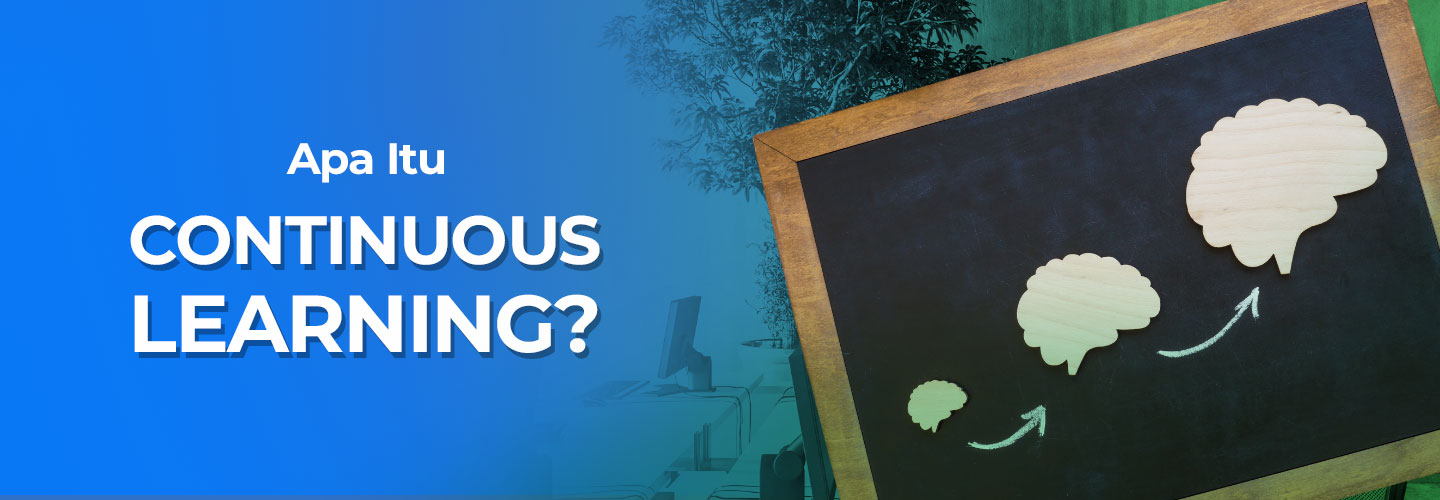Continuous Learning and Its Benefits for Employees

It would be a shame if a trip or experience was considered a one-time learning process. People who think like that will be beaten by their competitors.
In the world of work, experience must be understood as a limitless process. This makes employees more ready to adapt to changes in technology and industry. Continuous learning keeps employees motivated after going through the orientation period.
Continuous learning is a person's response to the needs of an ever-growing industry. The form can be formal or informal and structured or unstructured.
Understanding Continuous Learning
In professional situations, continuous learning relates to the way a person expands their skills in response to changes in their surroundings. This is very important because everyone needs to respond to change every day.
Continuous learning is the development of knowledge and skills that can be done continuously. Continuous learning is also often used in the context of professional development in the workplace. This includes developing new skills and knowledge, while reinforcing what has been learned.
Example of Continuous Learning
Examples of changes that occur every day are often found in the workplace, such as the emergence of AI technology to be able to complete tasks more efficiently.
At the individual level, continuous learning is defined as the practice carried out by individuals every day to continue to increase knowledge, including the following.
- Ask for help when something is not understood
- Observing more experienced employees at work
- Try new ways of doing things and explore alternative methods
- Putting into practice the things you have learned
- Improve personal skills by taking part in online training programs outside of work
In organizations, continuous learning is related to the formation of teams that need to adapt to changes in the business environment.
This method also needs to be communicated by HR to minimize the impact of external changes and keep the business strong in the future. Employees will be better prepared to adapt to change as more efficient talent.
Benefits of Continuous Learning
Continuous learning has the potential to expand and develop employee skills. This will increase retention of skills and knowledge, generate new perspectives, increase morale, and improve overall performance.
At the individual employee level, the benefits of continuous learning can include the following.
- Helps achieve career development goals
- Obtain or renew a professional license or certification
- Exploring new perspectives on work
- Maintain marketable professional skills
In an organizational context, the benefits of continuous learning can play a role in the following things.
- Contribute to organizational goals
- Contribute to a culture of reliable and potent innovation in the workplace
- Make employees feel valued by showing investment in their development as individuals
- Helps reduce costs, as investing in employee development can be more efficient than starting new employee training
How to Implement Continuous Learning
Employees may be hesitant to spend time studying and prioritize deadlines. To encourage employee participation in continuous learning, companies need to create a supportive learning environment in the following ways.
Start planning
Demonstrate that the organization is investing effort and resources in the form of continuous learning and mapping. Create learning plans such as at the individual employee, team, department, or organization level. Have a dialogue between management and employees to clarify goals and priorities in the process.
Leadership from organizational officials
In order to form a culture that is understood by all company stakeholders, this needs to start from the top and flow down. It is important for management to communicate its support for learning activities for its employees.
Provide and carry out maintenance
Appropriate resource management to support continuous learning among employees and maintain a culture of continuous learning.
Many companies are adapting microlearning. They repurpose content through social media as part of continuous learning. This approach turns out to be able to increase engagement and make the learning process a new habit.
Continuous learning can be the key to maintaining employee productivity and retention in the company. You can start implementing this strategy with employees until this process is recognized as part of the workflow rather than a barrier to daily performance.